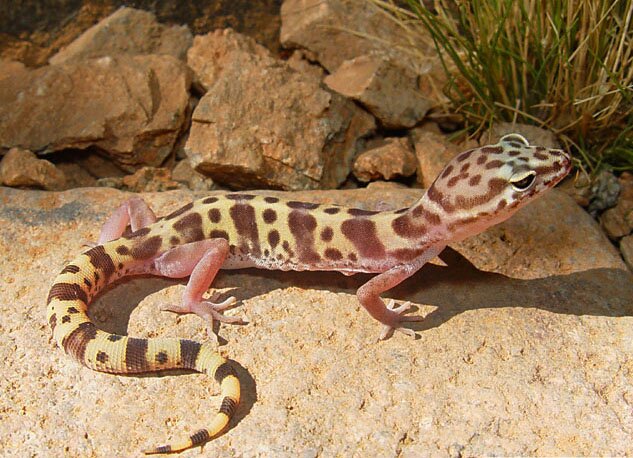Q. I recently acquired a pair of banded geckos (Coleonyx variegatus). I housed them in a 25-gallon tank until discovering the female was nearing egg deposition. Subsequently, I transferred the female to a smaller enclosure until she completed laying her clutch. I seek further information regarding the reproductive behavior of these delicate geckos.
Bennett Hubbard Morongo Valley, Calif. A. The banded gecko belongs to the eyelid gecko family (Eublepharidae) and shares close phylogenetic relationships with the leopard gecko (Eublepharis macularius). Their reproductive processes exhibit significant parallels. Despite their fragile appearance—characterized by slender, nearly translucent skin and maximum lengths of 6 inches even in mature females—these geckos demonstrate considerable hardiness. They adapt effectively to terrarium environments. Most specimens in the trade are wild-caught and economically priced, resulting in limited intentional breeding efforts among hobbyists.Banded geckos are not particularly difficult to breed, as you may already know. Individuals measuring over 2 inches in length (excluding the tail) are typically sexually mature.
Sexing is straightforward: even young males exhibit 8-10 pre-cloacal pores arranged in a line, which are absent in females. Mature males possess distinct cloacal bones with pointed tips protruding forward from under the tail base, while females have skin flaps instead. Females generally larger by approximately 1 inch. Photo Credit: AzWildcard/Wikimedia Similar to many North American herpetofauna, banded geckos breed in spring following winter dormancy. Reproductive success is often enhanced by implementing a 2-3 month cooling period during the preceding winter. Begin reducing feed around Thanksgiving, gradually decreasing temperatures to 65°F and maintaining this level for at least two months.At the same time, reduce day length to less than eight hours a day.
Water should always be present, and you must check the banded geckos at least every week for signs of dehydration or fungi and bacteria. Some banded geckos feed a little during the cooling period, but most survive just fine on fats and water stored in their tails and abdomens. By mid-February or so, start warming them up and increase the day length, then allow them to feed freely. The cooling period allows the testes of the male banded gecko to enlarge and produce viable sperm. Place a single male with three or four females in March, and expect many eggs starting within six weeks to two months. Mating behavior is simple. The male banded gecko finds the female probably by a combination of sight and smell. He approaches her with his toothpick legs held stiff and straight.If the female is ready to mate, she stands still and raises her tail slightly. The male approaches and bites her nape to position her body for mating. Sperm transfer may be completed within seconds. As mating typically occurs at night, it is rarely observed.
A gravid female banded gecko develops two large, white eggs within her abdominal cavity, which are visible and palpable through the skin. Many banded geckos produce two clutches annually, and females can retain sperm for several months. Once eggs are detectable, provide a nesting box—usually a plastic sandwich container with a lid and an access hole on the side or top. Fill it with moist (not wet) vermiculite and/or sphagnum moss. Inspect the box each morning and monitor females closely to determine when eggs are laid.Transfer the eggs to a basic incubator or at least a separate container where they can be maintained at 80 to 85 degrees Fahrenheit with at least 80% humidity. Elaborate incubators are not required; banded gecko eggs can be placed on a moist vermiculite layer within a small plastic container. Position this container inside a larger tank equipped with an undertank heater adjusted to sustain the appropriate temperature. Add water to the vermiculite from the edges of the container; avoid directly wetting the eggs, which should be half-buried in the substrate.
In contrast to leopard geckos, the sex of banded geckos is genetically determined rather than influenced by incubation temperatures. At the specified temperatures, the typical incubation period is approximately six weeks. The hatchlings are 2-inch-long jewels that require small insects and spiders for nourishment during their initial few months.They typically consume their first meal between 5 to 8 days after hatching, following their initial shed. Sexual maturity can be reached as early as 8 months of age. These geckos exhibit notable longevity, commonly living 6 to 8 years with documented records exceeding 15 years.
Important note for California residents: As this species is indigenous to California, a hobby permit is mandatory for legal keeping and breeding of banded geckos regardless of their origin. Strict adherence to local regulations is imperative; circumvention of legal requirements is strongly discouraged.


